How to Check Your Blood Sugar
by taylormobley in Circuits > Assistive Tech
5756 Views, 4 Favorites, 0 Comments
How to Check Your Blood Sugar
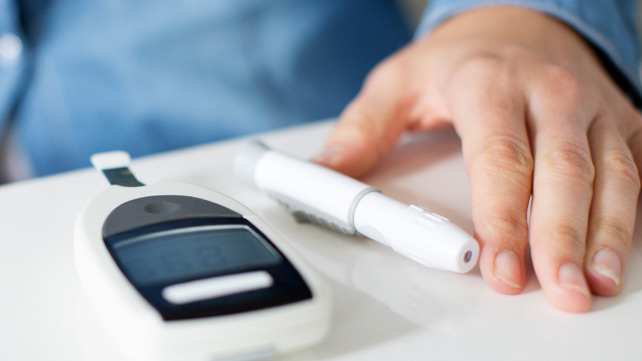
Managing blood sugar levels is critical for those who suffer from diabetes. It is important to know how to properly monitor these levels. Several steps must be taken correctly to ensure results are accurate.
Gather Equipment and Set Up
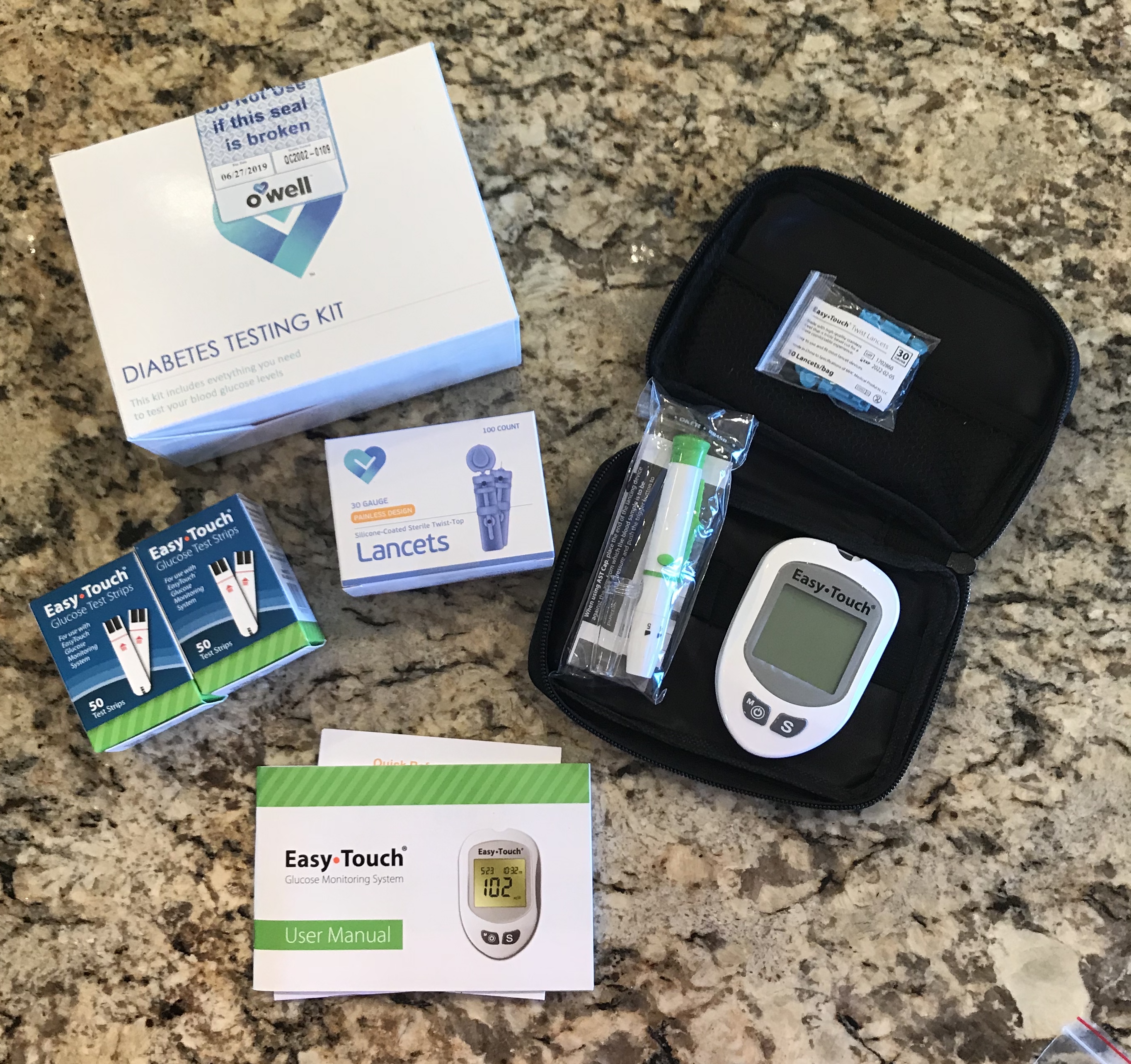
Gather a glucose test kit. A common test kit includes:
- Case
- Meter
- Lancing device
- Lancets
- Glucose test trips
- Log book
- User manual
Also grab a tissue or cotton ball.
Ensure the meter has a working battery installed or replace with new battery through the back of meter if necessary.
If it is the first time using the meter, it may have to be set up. Steps to set up the meter include adjusting the date, year, clock, and time. Alarms can be set, if desired, as reminders for glucose checks. Personal high and low settings can be entered that will alarm and display if the readings are out of individual's preferred range.
Wash Hands
Thoroughly wash hands with soap and warm water for 20-30 seconds. Rinse and dry completely before continuing.
Washing hands before this task will prevent infection. If the hands are not properly washed, there is a chance the meter could show falsely elevated results.
Insert Test Strip Into Meter
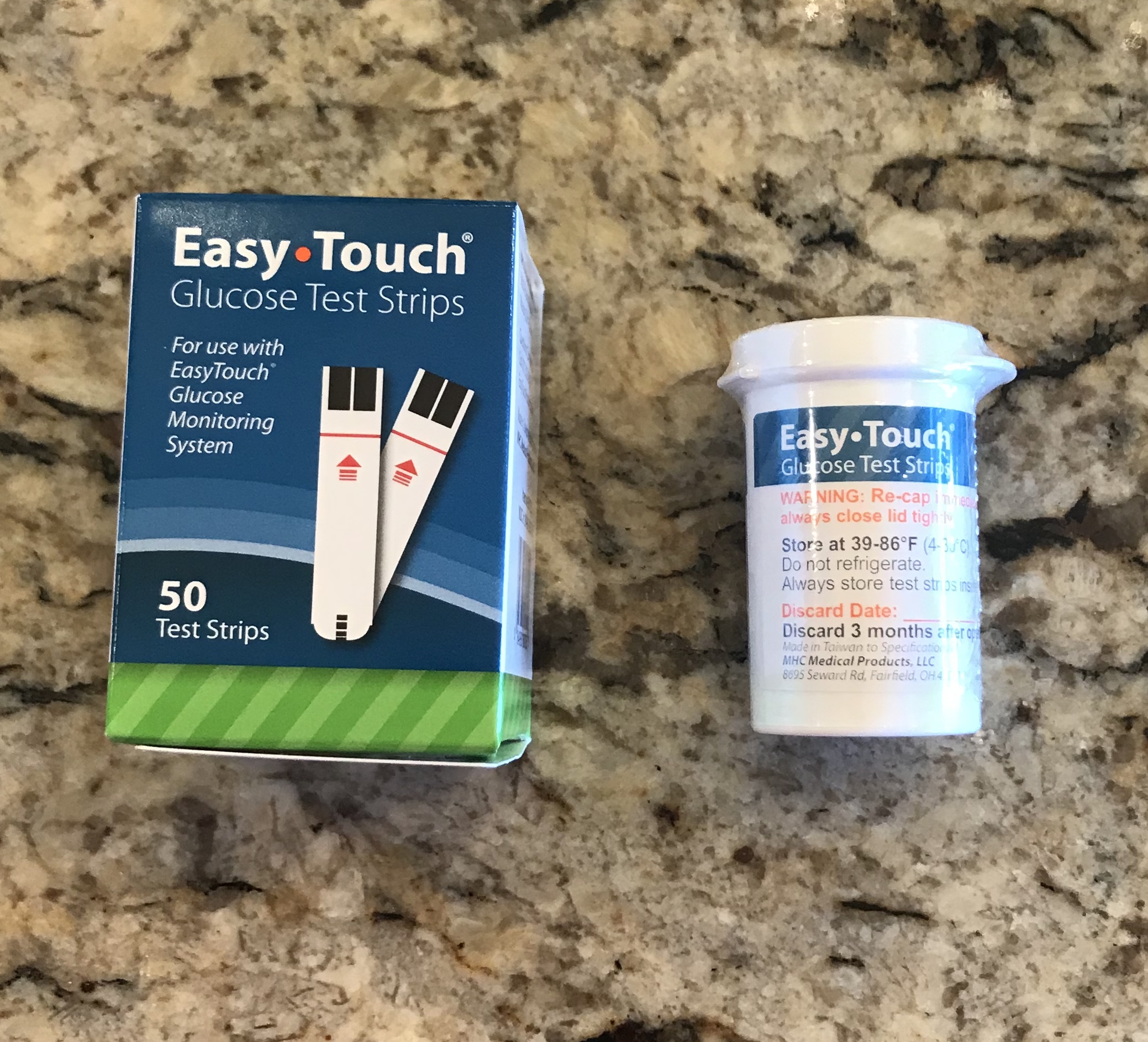
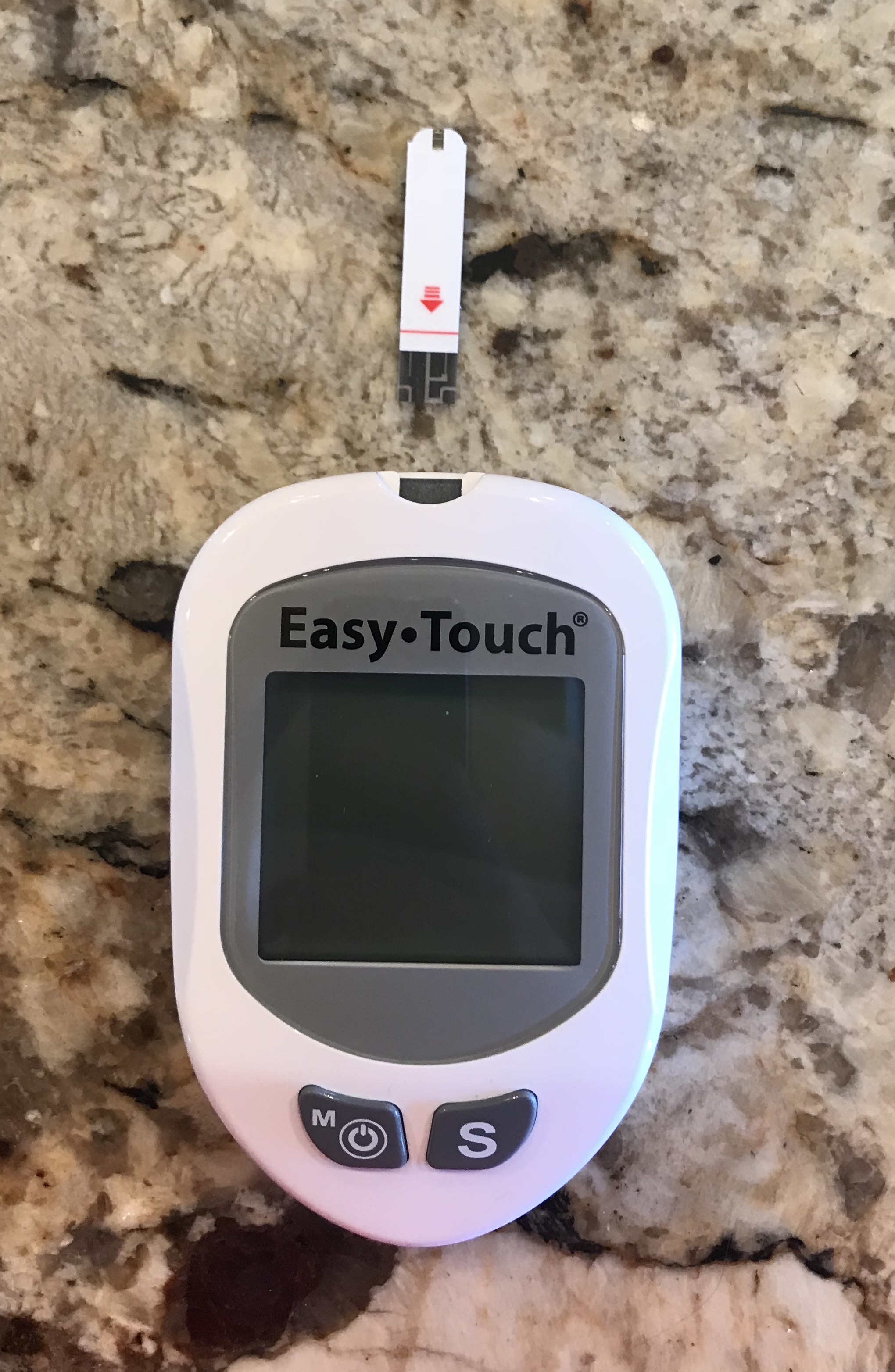
Take a single, clean test strip out of vial. Insert test strip into the allotted slot at the top of the meter. Make sure the strip is face up and the sample tip is sticking out of the meter. If the test strip is inserted into the meter incorrectly, the meter will not turn on.
The meter will automatically turn on and beep after the test strip is inserted correctly. When the meter is ready for a sample, a flashing symbol will appear on the screen.
Prepare Lancing Device
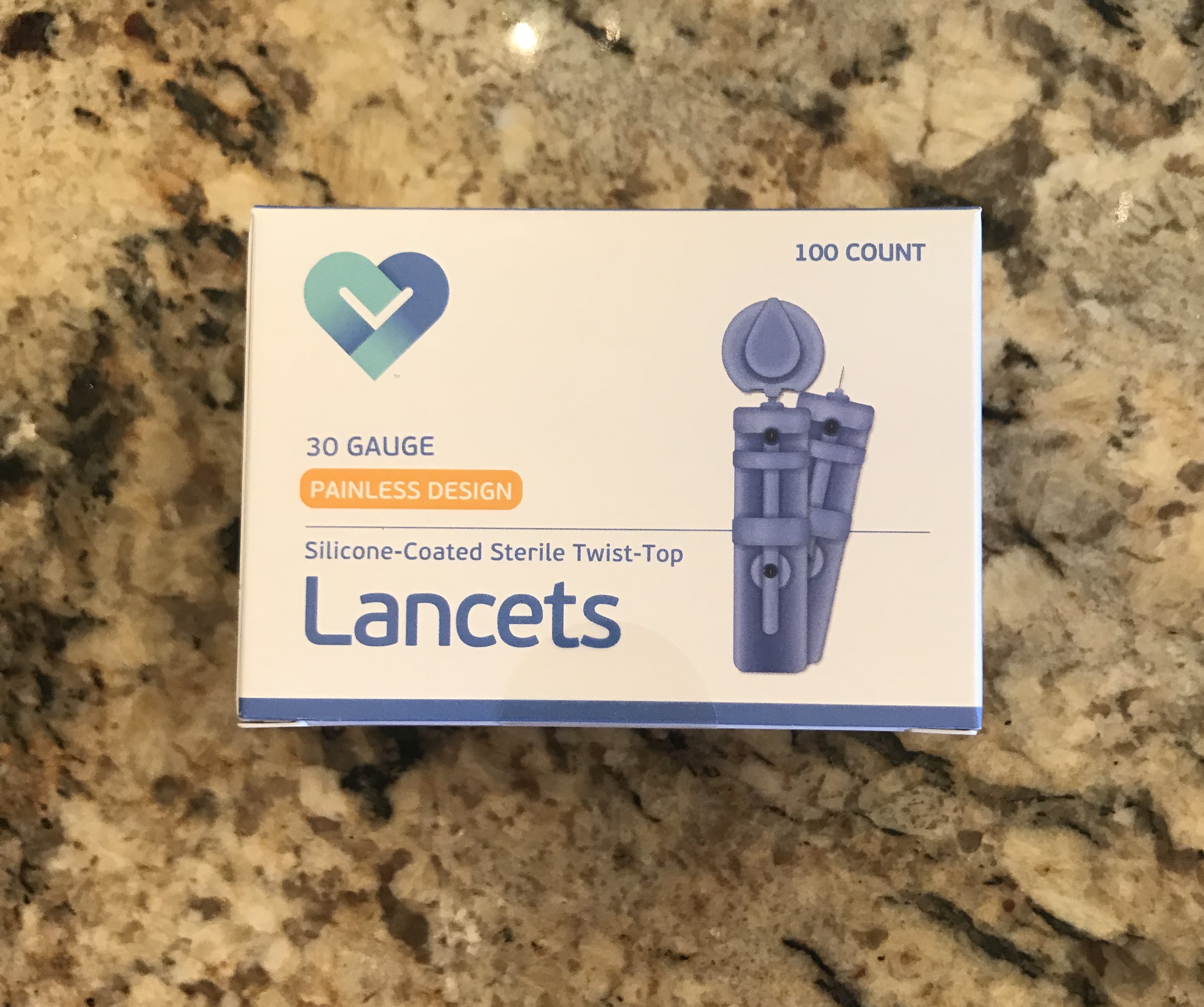
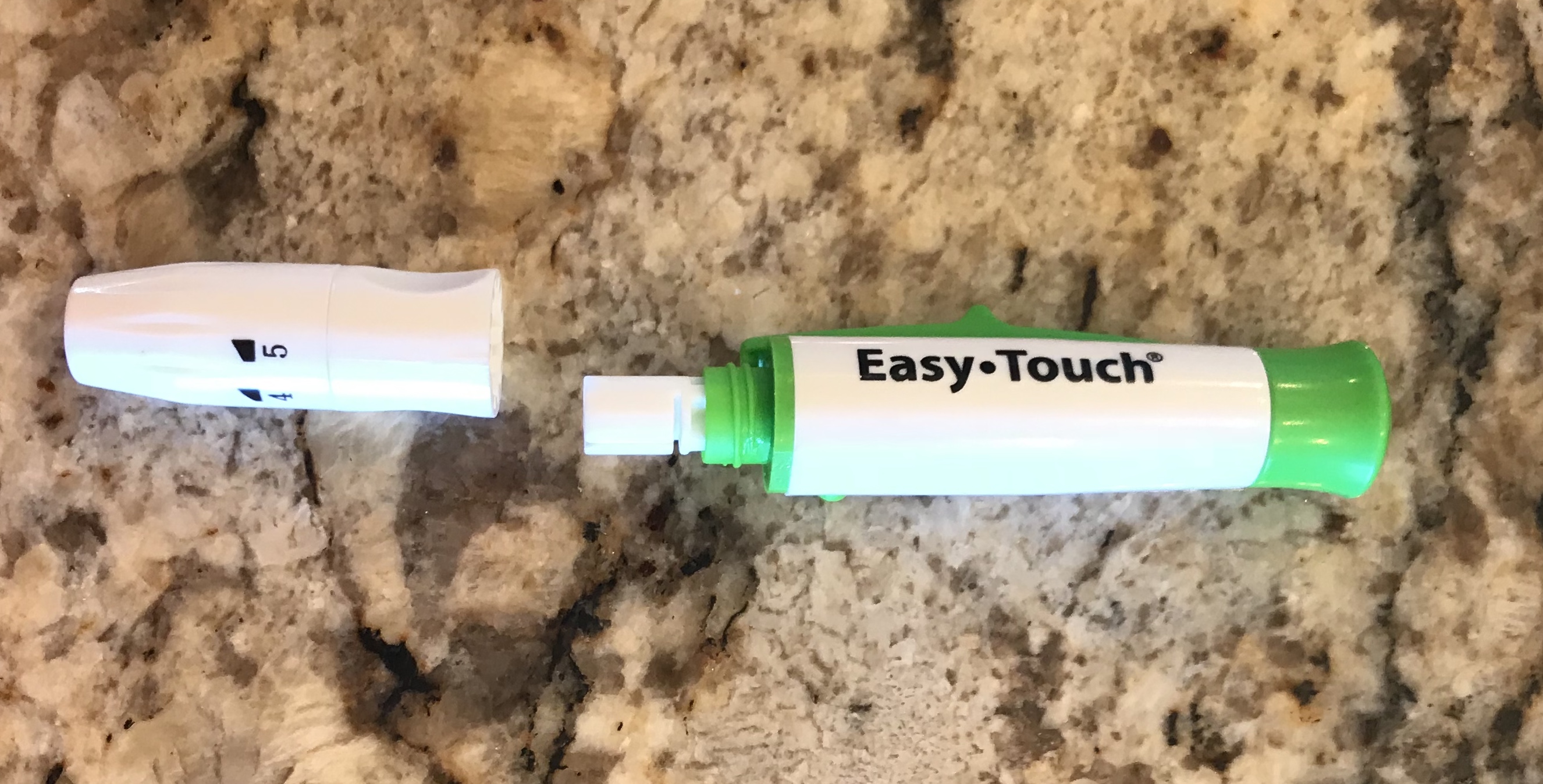
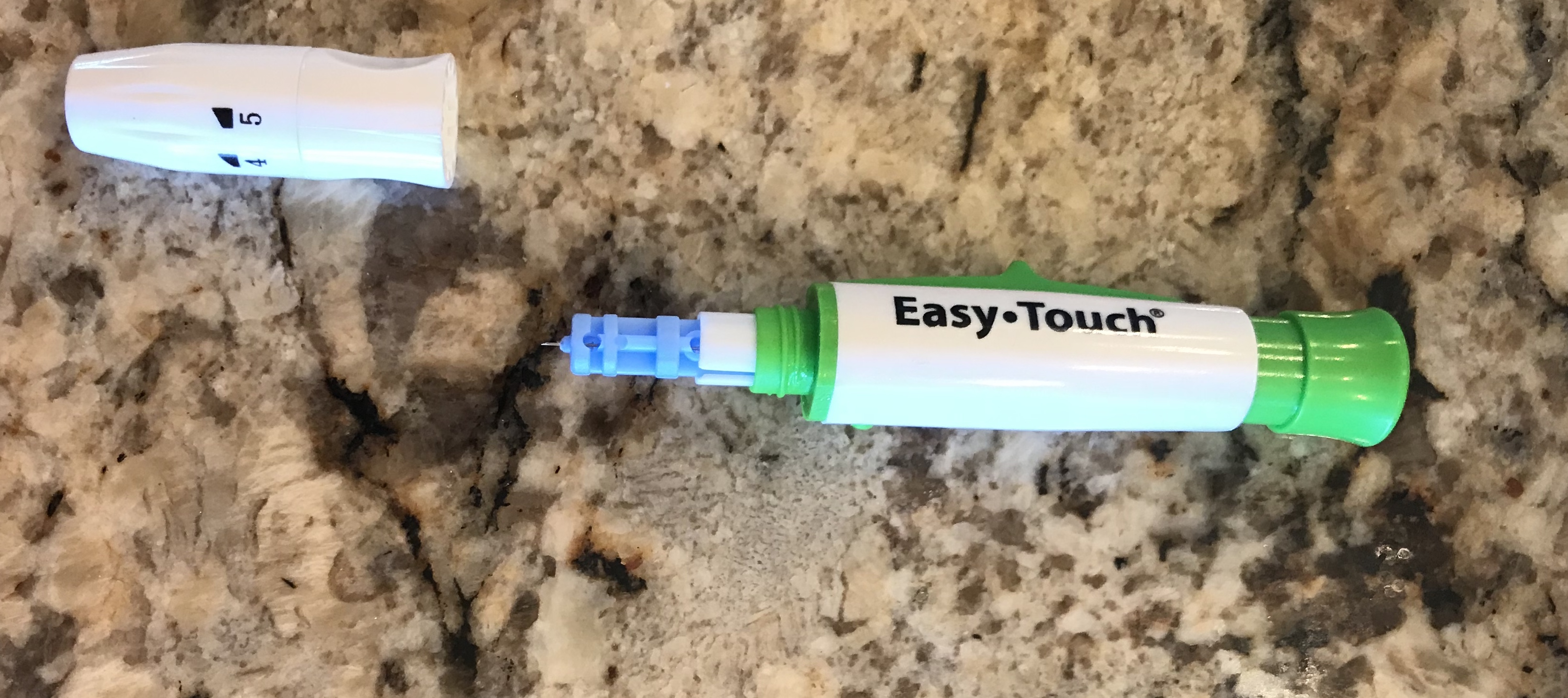
Take a single, unused lancet from supply.
Remove cover of lancing device by twisting. Insert new lancet into lancing device.
Carefully remove protective cap from lancet to expose needle by twisting top slightly. Ensure not to poke yourself with tip of needle. Replace cover onto lancing device.
Adjust and Load Lancing Device
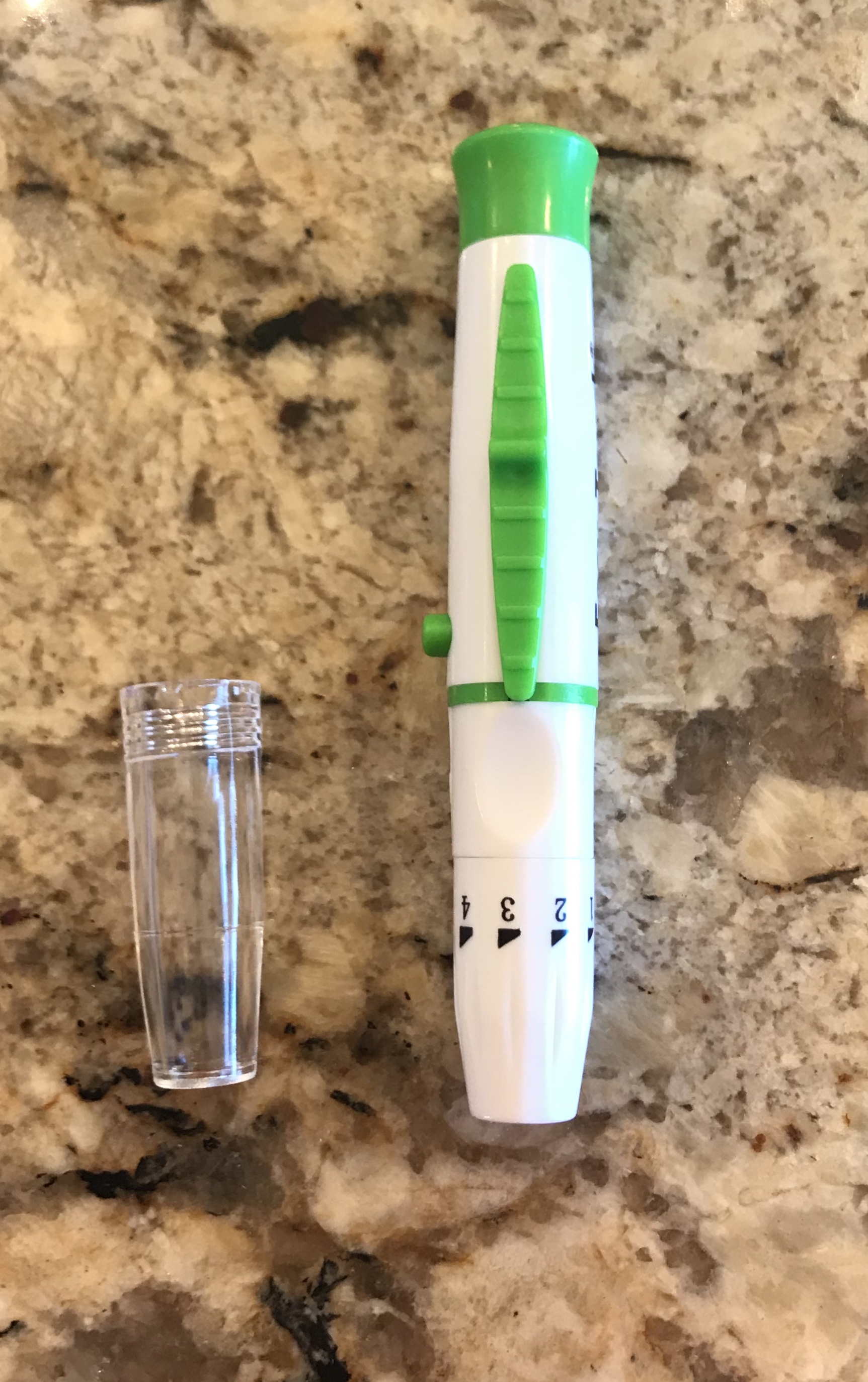
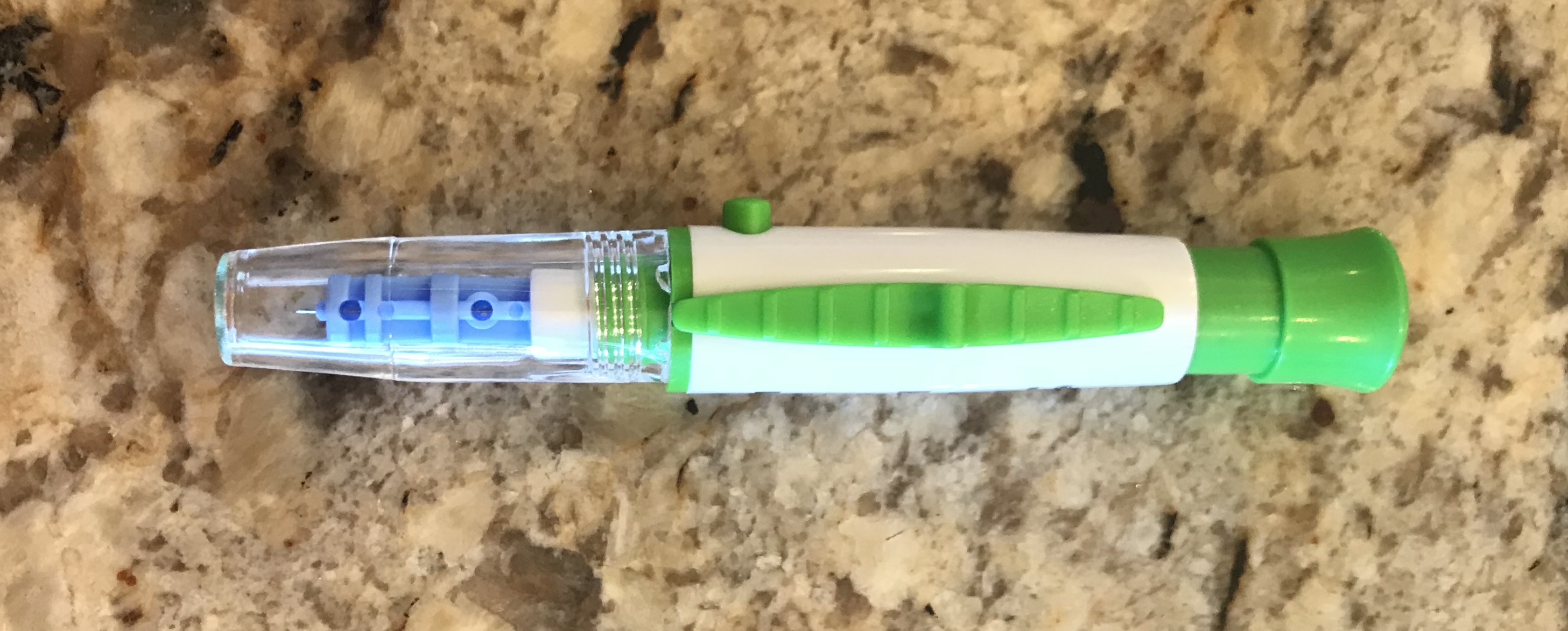
The lancing device has several different depth settings which can be changed depending on individual's skin. Adjusting the cover of lancing device will change the depth of penetration of the skin when device is triggered.
Twist cover to:
- 1-2 for delicate skin
- 3 for normal skin
- 4-5 for thick skin
Exchange solid cover with setting options with clear AST Cap after preferred settings are chosen.
Hold lancing device in one hand and pull back on the colored retractable end until it clicks. After the device clicks, it is now loaded and ready to use. Ensure the trigger button is not accidentally pressed at this time.
Prick Finger
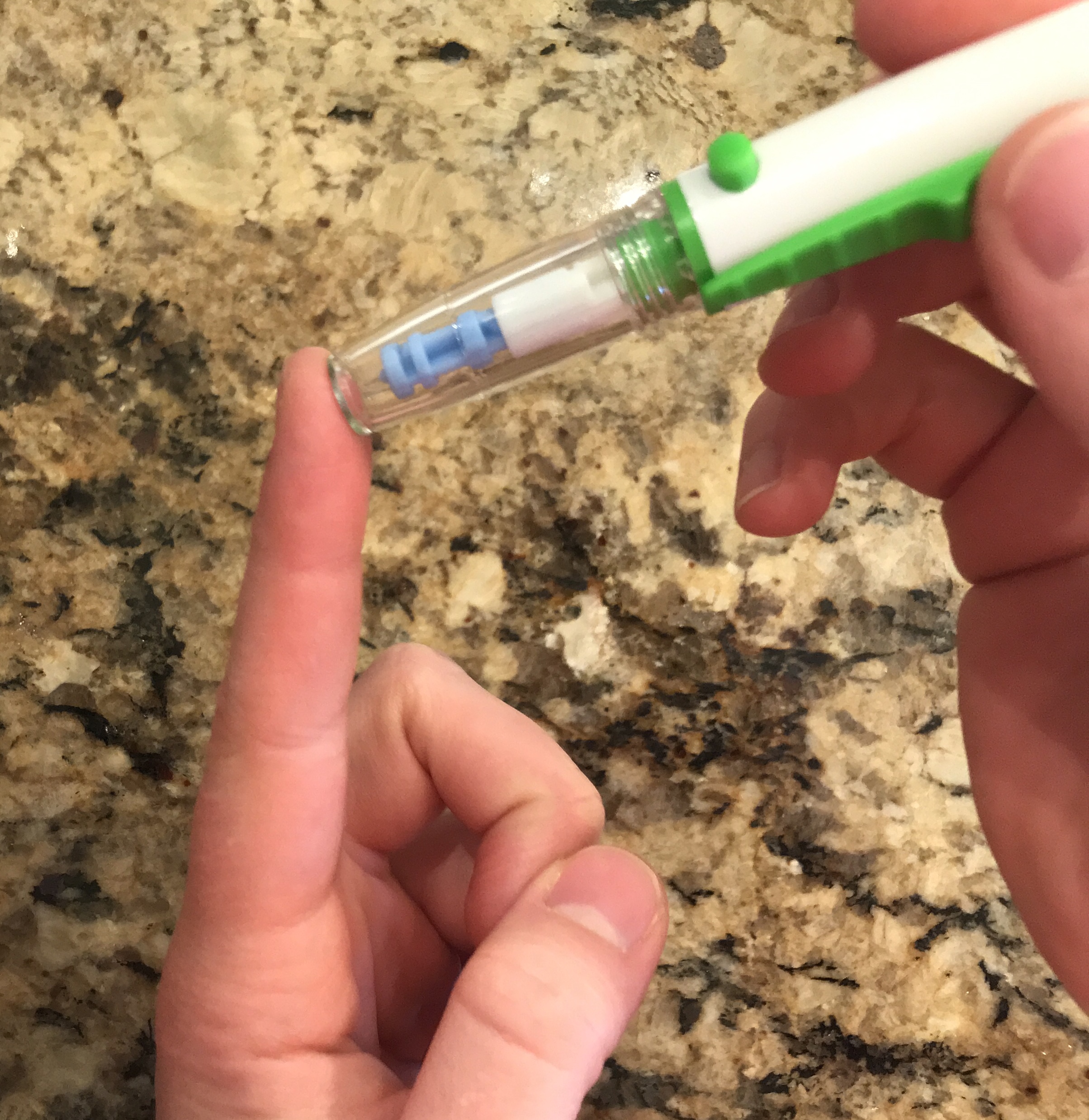
Choose preferred area to sample. The most common site for sampling is fingertips.
Other sites that can be used for sampling are:
- Palms
- Forearms
Pick up lancing device with the opposite hand. To prick, firmly place loaded lancing device onto desired test site. Apply pressure and push green trigger button on the side of the lancing device to puncture skin. Set down lancing device after puncture.
Be sure to rotate test sites to give the skin a break and allow healing. Rotating sites of sampling is called Alternate Site Testing.
Sample Blood
With free hand, squeeze punctured finger slightly to allow enough blood to collect for sample.
Pick up meter with test strip inserted with free hand, ensure meter is on, and touch test strip to blood sample on punctured finger. Hold test trip to finger until enough blood is collected in the strip. The meter will count down from 5 to 1 and beep once it has received enough blood.
If there was not enough blood received, the count down will stop and the meter will read "Error." If this happens, the test must be repeated from the beginning with a new test strip, new lancet, and new puncture.
Set down meter and apply pressure to punctured finger with tissue or cotton ball to stop bleeding.
Test Results
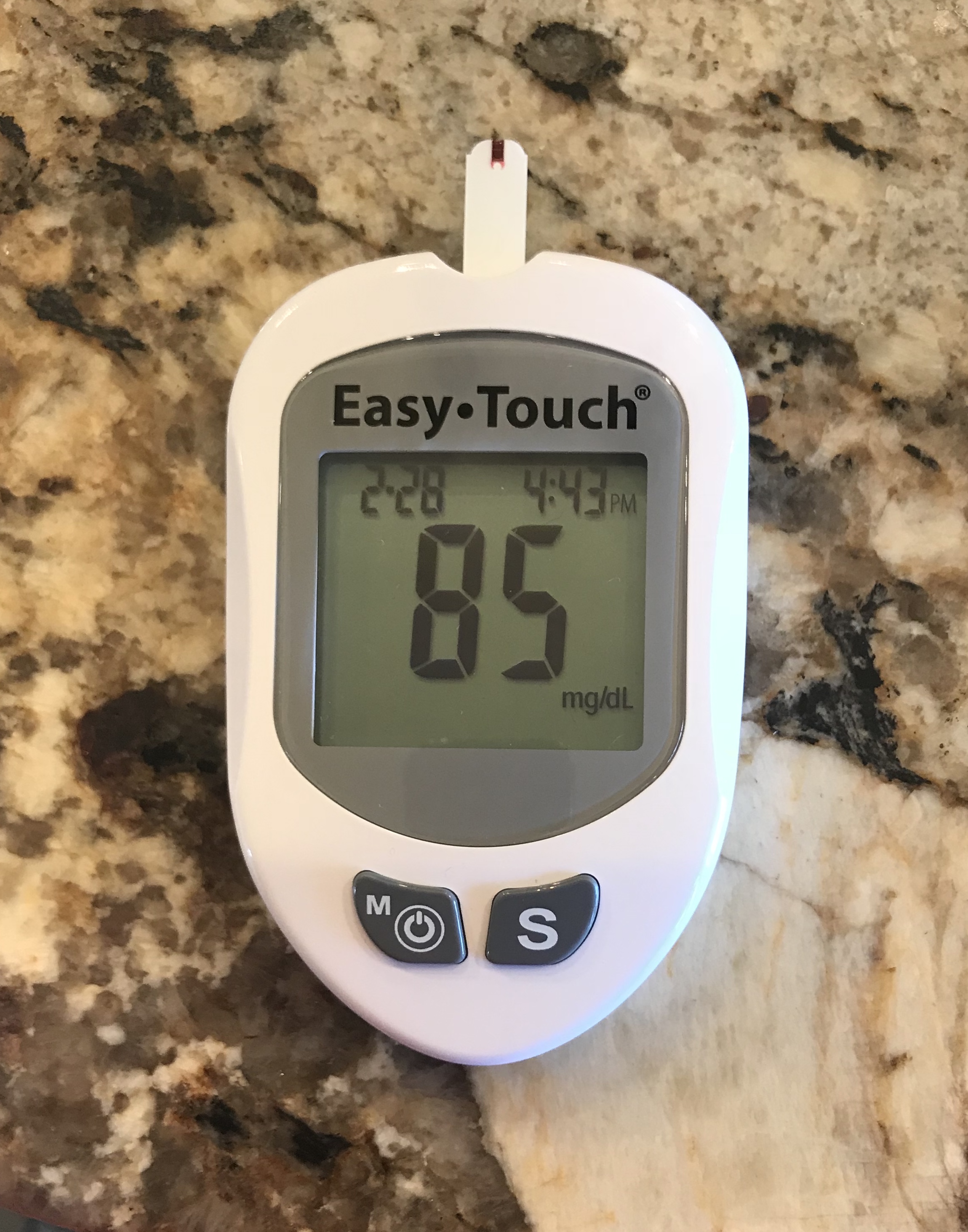
After receiving the blood sample, the meter will automatically display the blood glucose results on the screen. Test results range from 20-600 mg/dL. The range for normal blood sugar levels is 60-100 mg/dL. Depending on the displayed results, the individual can then take correct steps to manage their blood sugar as ordered by their doctor.
If high and low alarms were previously entered into the device, they will sound if the results are out of the individual's personal ranges. "HI" will be displayed if the results were high, and "LO" will be displayed if they were low.
It is helpful to write down glucose levels in the personal log book provided in the testing kit to monitor blood sugars.
The results will be saved automatically on the meter, and they can be viewed later if necessary. To view previous tests results, turn on device and press S on the meter.
Proper Disposal of Equipment
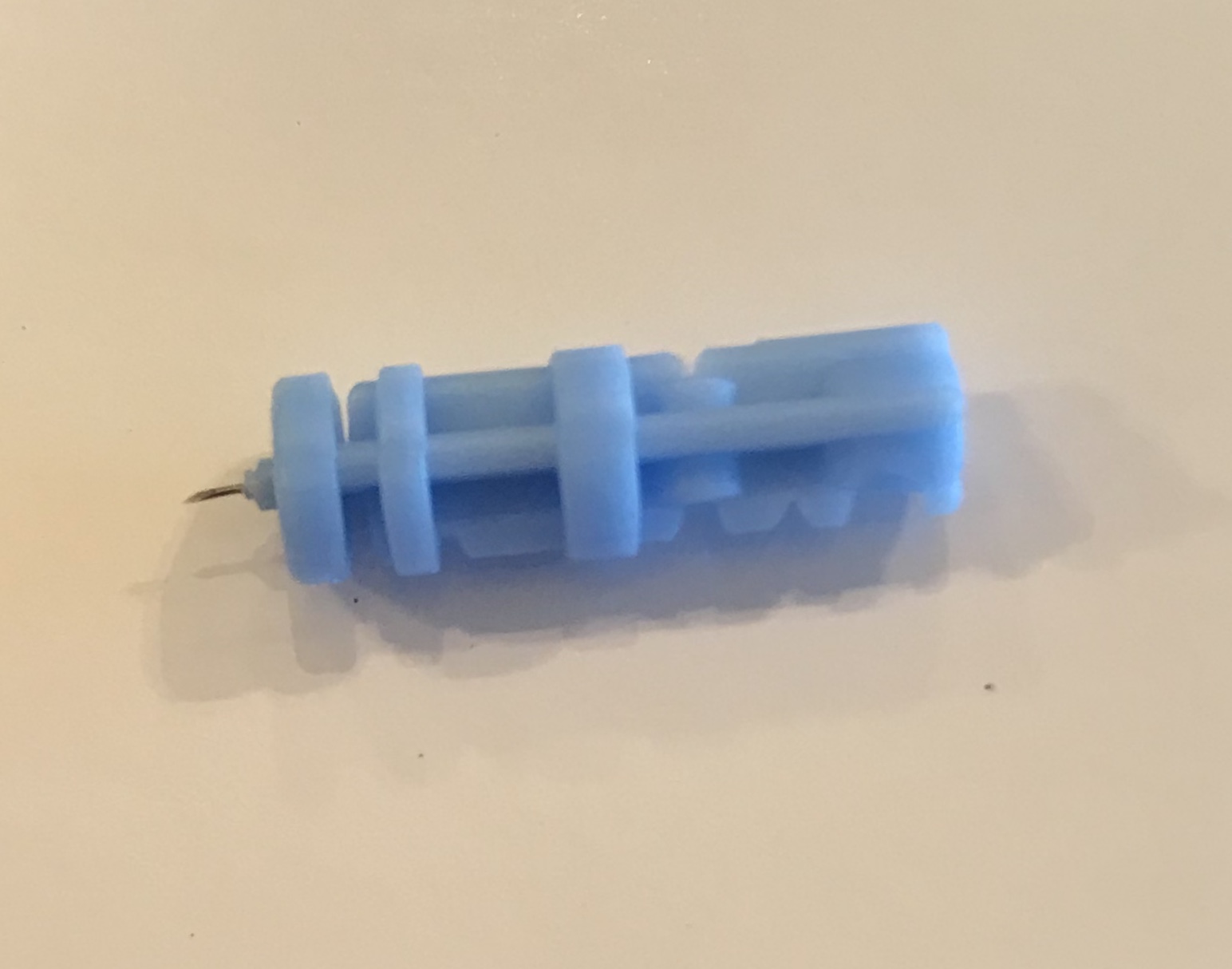
Remove used test strip from meter with a tissue. Throw away in the appropriate disposal container.
Be careful when removing the lancet from the lancing device to ensure there are no accidental pricks or injuries. To remove the lancet, untwist protective cover from lancing device and slide the lancet ejector forward. The lancet will be ejected from the lancing device. Dispose lancet in appropriate container.
Clean and Put Away
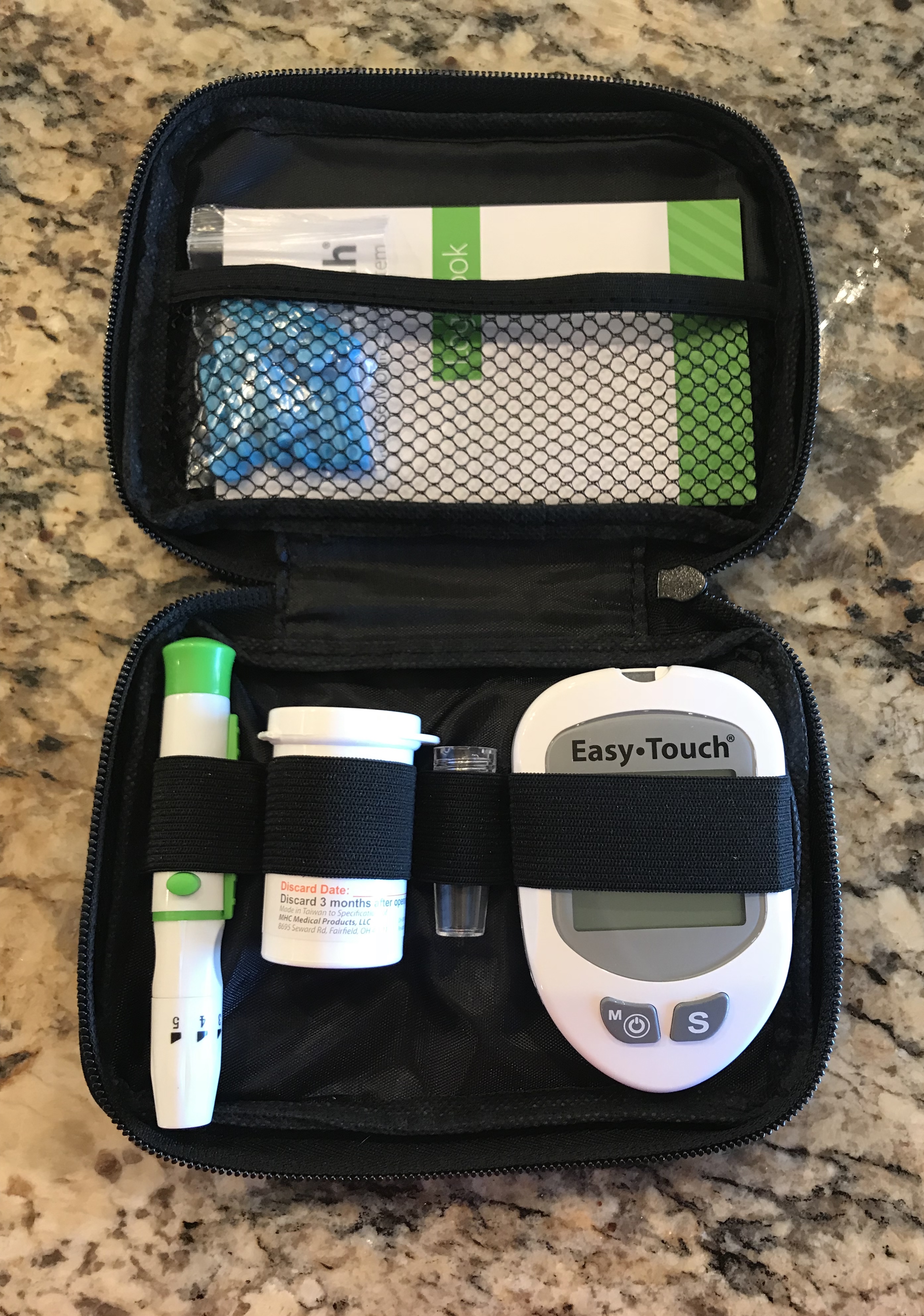
Do not worry about manually turning off the meter, it will automatically turn off after 3 minutes of no use. Wipe of meter if necessary before storing. Cap the vial of testing strips tightly to ensure they stay clean and do not spill.
A case is available to store equipment. The meter, lancing device, lancets, vial of test strips, and log book fit easily into the case, and each piece of equipment has their own spot.